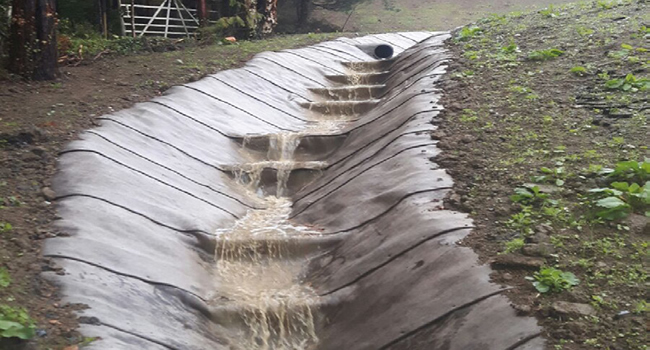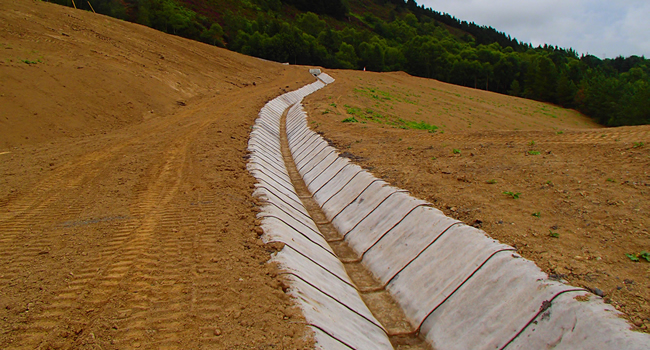In June 2017, Concrete Canvas® Geosynthetic Cementitious Composite Mat (CC GCCM) was used to line a series of drainage channels at a remediated mining site in Wicklow, Ireland. The channels were engineered to divert surface water around the former contaminated spoils zones.
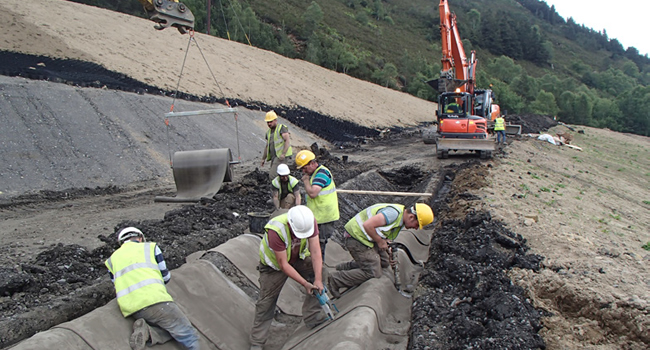
The site had an extraordinarily long history of mining, with copper mining activities having been reported as far back as 1720 in the Avoca River Valley. These activities continued, without interruption, up to 1982 and included the addition of some silver a bit of gold mining.
The legacy of mineral extraction includes open pits, more than 70 shafts and adits, numerous piles of contaminated spoils, and former mine-related structures. The acidic, metal-laden water discharges from the abandoned copper and sulphur mines threatened the water quality of the nearby Avoca River.
Civil and Environmental Engineering Contractor, Priority Construction Ltd. was appointed to carry out health and safety and remediation works at a part of the site known as Tigroney West.
CONTAMINATED SPOILS & DIVERSION PLAN
The site is located to the west of a railway line and at the base of the East Avoca mining area. This area was overlain by waste material contaminated with heavy metals (the contamined spoils) from the old mining activities. The close proximity of the spoils to the river had had a detectable, negative impact on water quality.
As part of the remedial works, the contaminated spoils zones were regraded and capped with clay soil. The drainage channels were installed at the boundaries of the site to redirect upstream drainage around the capped areas.
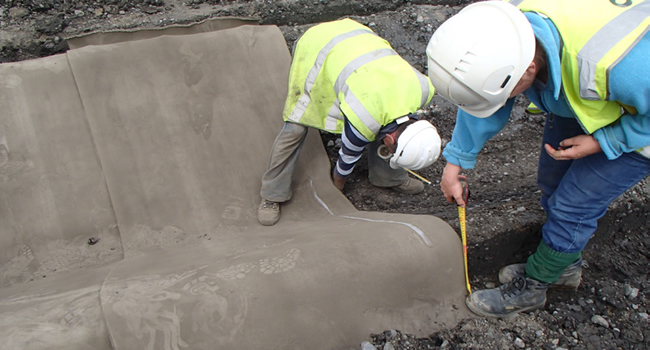
The original design used a combination of precast concrete channels and a high-density polyethylene liner and rip-rap channel. This plan presented some installation risks (due to steep slopes and the need for heavy equipment) as well as a long lead time due to the precast concrete. The contractor proposed an alternative: the CC lining system.
This suggested offered a number of advantages. The CC bulk rolls could be cut to the exact section of any given channel, eliminating wastage. It could easily accommodate variations in the site profile. It also offered significant speed and ease of installation, cost savings, heightened durability, and greater environmental friendliness than conventional concrete.
Unlike most concretes, CC uses a specialist, high early-strength concrete with a limited alkaline reserve. It has a very low wash out rate. When combined with the volume of water required for hydration, these characteristics mean that CC run-off can be directly discharged into the local water course without the need for prior treatment.
It was an ideal solution for protecting local waters from the contaminated spoils.
RELATED: Geosynthetic-Concrete Composite Barrier for Brazilian Mine
PROJECT EXECUTION
Nineteen bulk rolls of 13mm-thick CC (CC13™) was delivered to the Avoca Mines site and stored in heavy duty plastic sheeting. Prior to installation, the channel was excavated and compacted to profile using a 20T excavator and V bucket. A 250 x 250mm anchor trench was created on either side of the channel to allow the leading edge of the CC to be buried so as to prevent any undermining. The CC was mounted onto a spreader beam and hung from an excavator. The rolls were then unrolled before being cut to specific profile lengths with a utility knife and dragged into place.
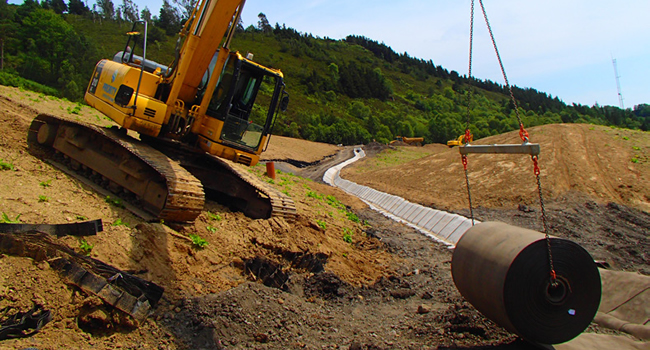
The contractor laid the CC transversely to accommodate changes in profile, overlapping layers by 100mm in the direction of water flow. The overlaps were sealed using a bead of Everbuild Clearfix adhesive sealant and screwed together at 200mm intervals with 30mm stainless steel screws. 250mm steel ground pegs were inserted through each overlap in the anchor trenches on either side of the channel and the anchor trench was then backfilled with material as an extra precaution against undermining.
For certain steep-slope areas of the channel, concrete steps were installed and the CC material was laid over the steps to dissipate the water energy. The CC was flexible enough to accommodate these step details and was pinned into the vertical interface of the steps using Hilti anchors. The CC material was hydrated after each day’s work using a hose with a spray nozzle attached and a 6000 liter water carrier.
In total, 1,520m2 of CC13™ was installed in just two weeks. More than 200m2 were installed daily, despite site steepness and variation slopes.
RELATED: Relining a Tailings Dam Stormwater Channel with Limited Access
The former Avoca mines site now has a diversion channel system engineered for long-term scour protection and erosion control. The lining system’s success of keeping surface water out of the remediated contaminated spoils zones has CC being considered for numerous other projects in the region.
